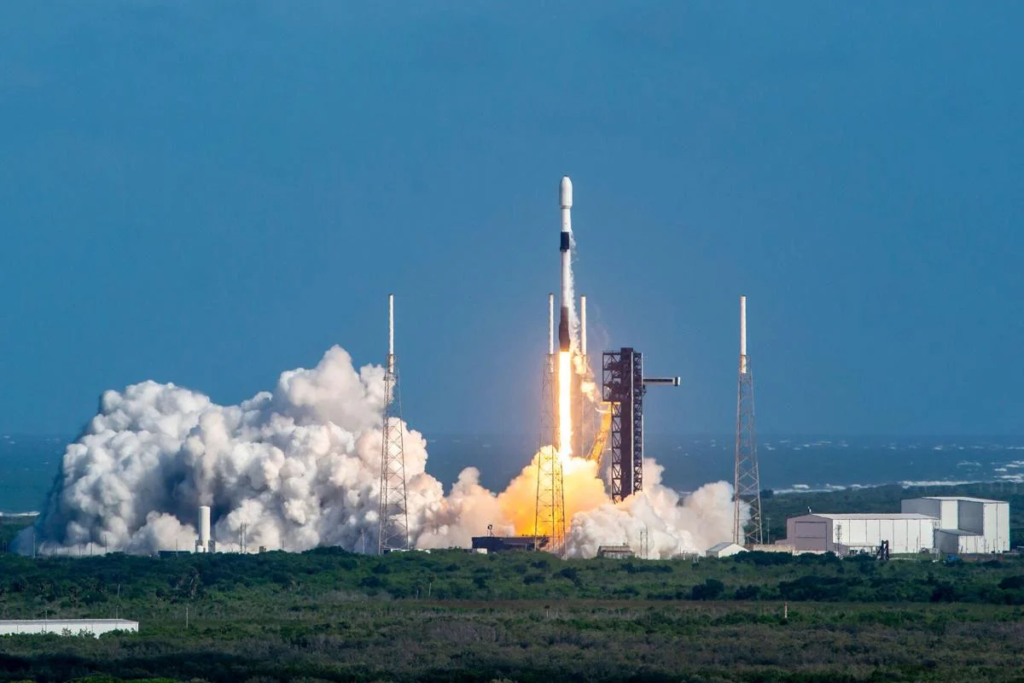On June 20, SpaceX successfully launched the Astra 1P satellite for Luxembourg-based SES, marking a significant milestone in the ongoing partnership between the two companies. The launch, which faced delays due to inclement weather, took place at 5:35 p.m. Eastern from Cape Canaveral Space Force Station.
Launch Details and Milestones
A Falcon 9 rocket carried the Astra 1P into geostationary transfer orbit approximately 35 minutes after liftoff. This mission was notable not only for the deployment of the satellite but also for the successful landing of the Falcon 9’s first stage on a drone ship in the Atlantic Ocean. This landing represents the 320th time SpaceX has successfully recovered an orbital-class rocket, a testament to the company’s growing proficiency in reusable launch technology.
The booster used for this launch had previously flown eight times, including four missions supporting SpaceX’s Starlink broadband constellation.
Astra 1P’s Mission and Future
Constructed by Thales Alenia Space, Astra 1P will spend much of the year using its on-board electric propulsion to reach its designated orbital slot at 19.2 degrees East. Once in position, the satellite will undergo health checks, with services expected to commence in January.
SES currently serves approximately 119 million households from four satellites at this orbital location, primarily in Germany, Spain, and France. The Ku-band capacity of Astra 1P is designed to replace these aging satellites, ensuring uninterrupted service for SES’s extensive customer base.
SES’s Evolution and Strategic Moves
SES, a pioneer in commercial satellite operations with SpaceX, first launched with the company in 2013 and became the inaugural user of a previously flown booster in 2017. As the satellite TV market continues to decline in favor of online streaming services, SES is shifting its focus towards broadband services to meet the increasing demand for data.
To strengthen its position in the competitive satellite communications market, SES announced plans in March to acquire rival operator Intelsat for $3.1 billion. On June 19, SES secured a €3 billion ($3.2 billion) debt package to support this acquisition, reflecting its commitment to expanding its connectivity services.
The Future of Astra 1P and SES
Astra 1P is expected to have a lifespan of approximately 15 years in orbit. It will replace the oldest satellite at the 19.2 degrees East slot, Astra 1KR, which was launched in April 2006. SES also plans to launch Astra 1Q, another satellite ordered from Thales Alenia Space, in 2026. Unlike Astra 1P, Astra 1Q will be a software-defined satellite, allowing for reprogramming to support various connectivity missions as needed.
SES’s strategic investments and technological advancements underscore its adaptation to the evolving satellite communications landscape, ensuring it remains a key player in providing both broadcast and broadband services.

